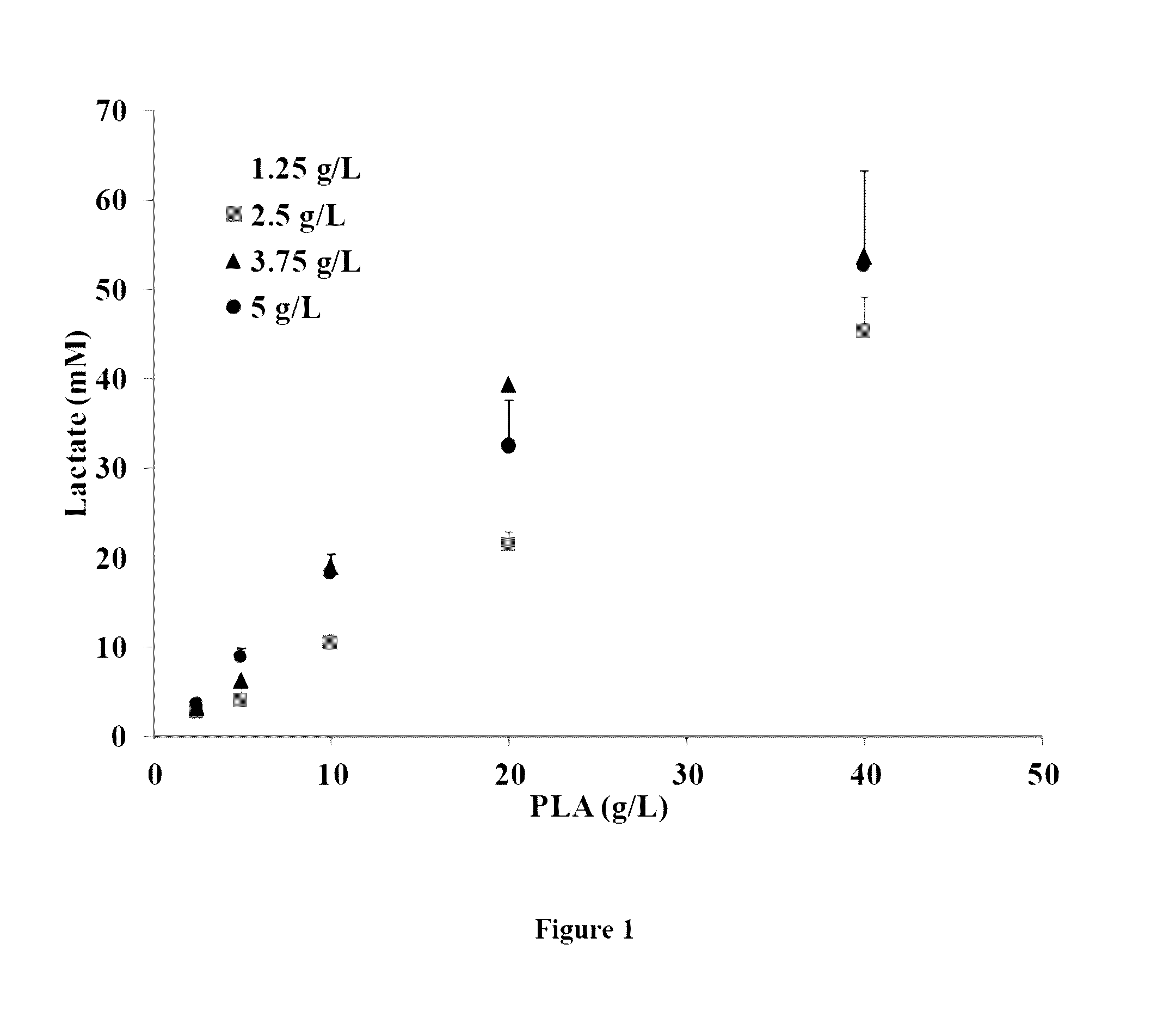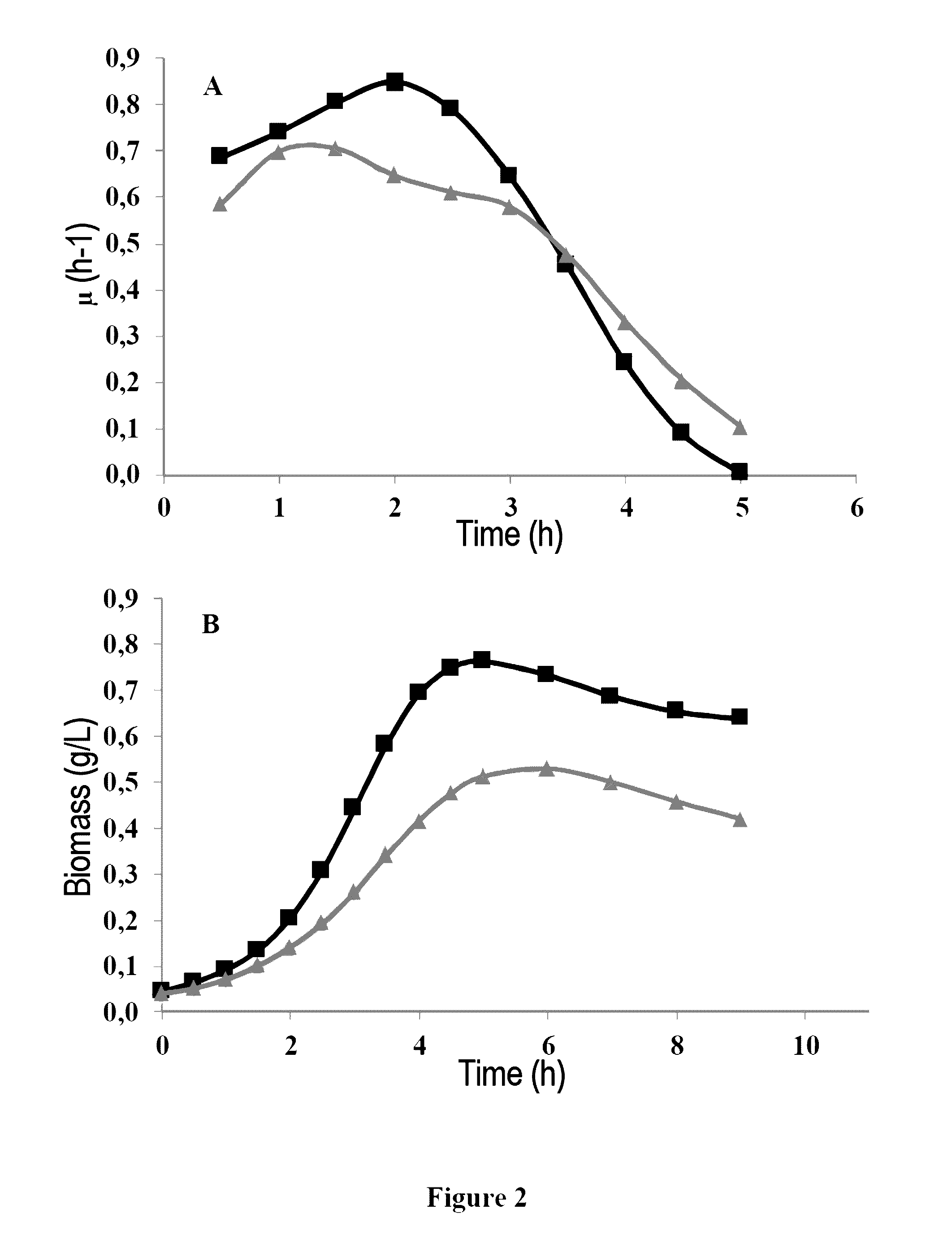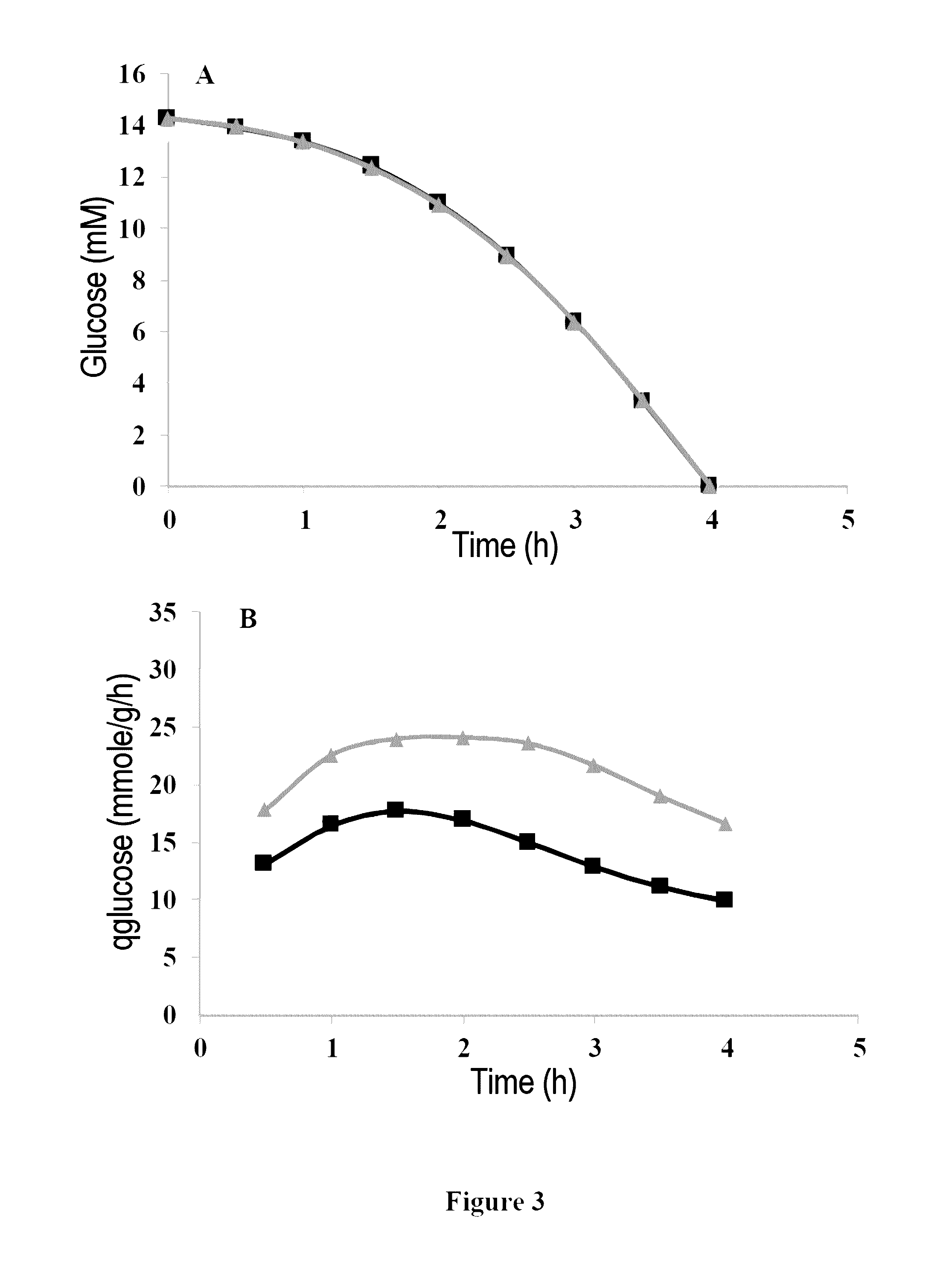Recombinant microorganism
a technology of recombinant microorganisms and microorganisms, which is applied in the field of recombinant microorganisms, can solve the problems of increasing production costs, increasing production costs, and increasing the difficulty of recycling such polymeric materials, and unable to achieve satisfactory reduction of production costs
- Summary
- Abstract
- Description
- Claims
- Application Information
AI Technical Summary
Benefits of technology
Problems solved by technology
Method used
Image
Examples
example 1
Recombinant Lactic Bacterium Expressing a PLA Depolymerase
[0062]Method and Apparatus
[0063]The cloning techniques used to prepare the recombinant plasmid are those conforming to the techniques described in Sambrook et al., 1989 (Molecular Cloning: A Laboratory Manual, Cold Spring Harbor Laboratory Press, Cold Spring Harbor, N.Y.).
[0064]The pld gene from Amycolatopsis sp. K104-1 with the sequence SEQ ID NO: 1 (Nakamura et al., 2001, Appl. Environ. Microbiol. 67:345-353) is introduced into the plasmid pNZ8048 by homologous recombination (Kuipers et al., 1998, J. Biotechnol. 64:15-21). The recombinant plasmid integrating the pld gene is termed “pNZ-pld”.
[0065]The wild-type strain Lactococcus lactis MG1363 is transformed by the plasmid pNZ-pld introduced into the cell by electroporation using the method described by Ho et al. in 1995 (“Transformation of Lactococcus by electroporation”, Methods Mol. Biol. 47:195-199). The recombinant bacterium integrating the pNZ-pld plasmid is denoted “M...
example 2
Evaluation of Lactic Acid Production
[0076]The culture supernatants of Example 1, corresponding to batches MG1363-pNZ-pld-1, MG1363-pNZ-pld-2, MG1363-pNZ8048-1 and MG1363-pNZ8048-2, are analysed by HPLC in order to determine the quantity of lactic acid liberated. To this end, an Aminex HPX-87H column, thermostatted at 50° C. and eluted at 0.5 mL / min with a 5 mM sulfuric acid solution, is used for the quantification.
[0077]This analysis could demonstrate that the quantity of lactic acid in the supernatant from batch MG1363-pNZ-pld-2 is higher than the quantity of lactic acid in the 3 other conditions (MG1363-pNZ-pld-1, MG1363-pNZ8048-1 and MG1363-pNZ8048-2). Similarly, the presence of a lactic acid dimer is observed only in the culture supernatant from batch MG1363-pNZ-pld-2.
[0078]A complementary analysis on a C18 column is carried out using the method described by Vu et al., 2005 (“Oligomer distribution in concentrated lactic acid solutions”, Fluid Phase Equilibria, 236:125-135). The ...
example 3
Culture of Lactococcus lactis IL 1403 in the Presence of Proteinase K
[0079]The example below deals with the combination of the Lactococcus lactis IL 1403 strain and proteinase K for the production of lactic acid. The proteinase K is proteinase K from Tritirachium album, available from EUROMEDEX under reference EU0090.
[0080]3.1. Selection of the Strain and Culture Medium
[0081]The strain used is the Lactococcus lactis IL 1403 strain. This strain was cultured on chemically defined medium (CDM medium) supplemented with 5 g / L of glucose and buffered to a pH of 8. A rich medium (containing sources of peptones, proteins or oligopeptides) was not used so as not to include in the culture medium substrates which would be preferred to proteinase K, which could compete with the PLA which is to be degraded.
[0082]
TABLE 1Composition of chemically defined medium (CDM) at pH 8CompoundsConcentration (g / L)Glucose5Sodium acetate1Ammonium citrate0.6KH2PO40.9K2HPO431.2MgCl2•6H2O0.2FeSO4•0H2O0.011CaCl2•2H...
PUM
| Property | Measurement | Unit |
|---|---|---|
| concentrations | aaaaa | aaaaa |
| concentrations | aaaaa | aaaaa |
| molecular mass | aaaaa | aaaaa |
Abstract
Description
Claims
Application Information
 Login to View More
Login to View More - R&D
- Intellectual Property
- Life Sciences
- Materials
- Tech Scout
- Unparalleled Data Quality
- Higher Quality Content
- 60% Fewer Hallucinations
Browse by: Latest US Patents, China's latest patents, Technical Efficacy Thesaurus, Application Domain, Technology Topic, Popular Technical Reports.
© 2025 PatSnap. All rights reserved.Legal|Privacy policy|Modern Slavery Act Transparency Statement|Sitemap|About US| Contact US: help@patsnap.com



